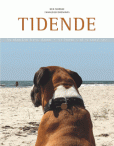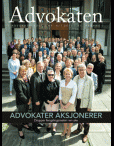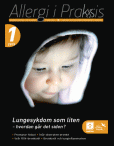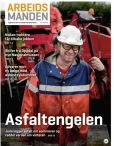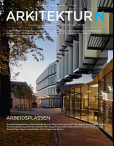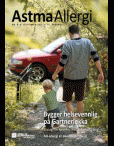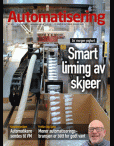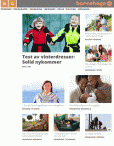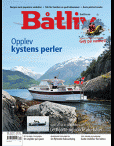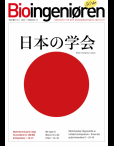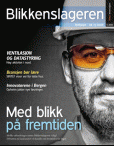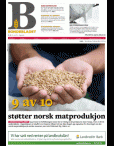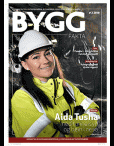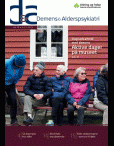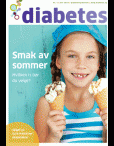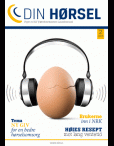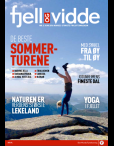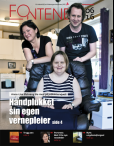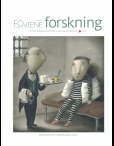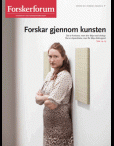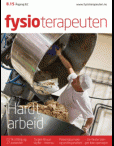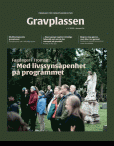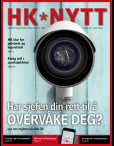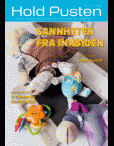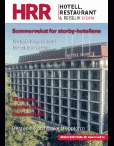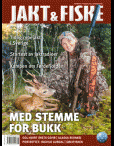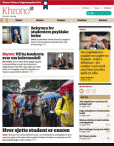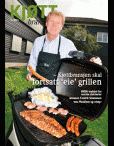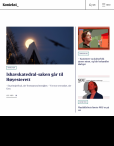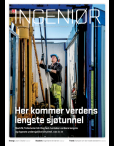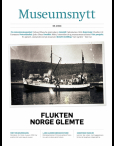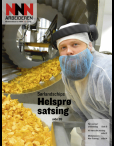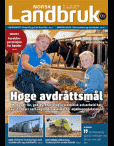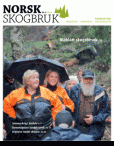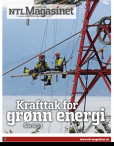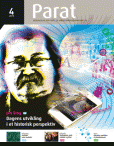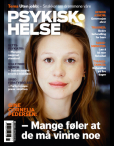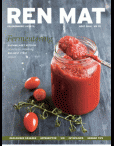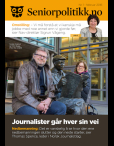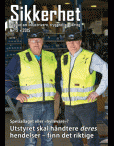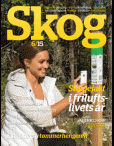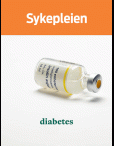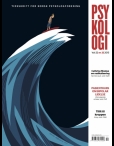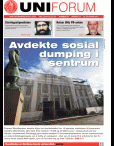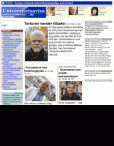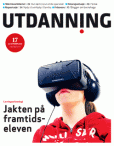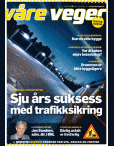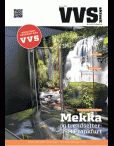Den norske tannlegeforenings Tidende
16.01.2020

A possible mutual effect of treatment of the diseases is not ascertained Summary Rheumatoid arthritis (RA) and periodontitis are both common chronic
... inflammatory diseases and may associate bidirectionally. The diseases show several similarities in their pathogenesis i.e. inflammatory mediators, cytokines and proteolytic enzymes are largely similar, with a tissue degrading profile in the two conditions. Soft as well as hard tissues are affected. Both are multifactorial disorders, influenced by a combination of host, lifestyle (smoking), environmental and genetic components, and both have a cyclic nature, fluctuating between chronic and acute periods. The clinical course of periodontitis in RA patients has been reported as more severe independent of age, gender, ethnicity, or smoking history, and RA patients suffer from increased tooth loss and attachment loss compared with controls.
Periodontitis is a plaque-induced inflammation of the periodontal tissues causing loss of alveolar bone and periodontal attachment. The periodontal pathogen Porphyromonas gingivalis has been hypothesized to account for a possible link between the diseases through citrullination.
An increased prevalence of periodontitis in RA patients has been shown in several studies. However, the results are conflicting, and a causal relationship has not been revealed. A possible mutual effect of treatment is not ascertained. For future studies, it may be valuable to examine subgroups of RA patients, paying more attention to medication and confounders.Introduction
The idea of a possible association between rheumatoid arthritis (RA) and periodontitis is far from new (1). Already Hippocrates, 400 years B.C., suggested that pulling teeth could treat arthritis. In 1918 Sturridge reported an RA patient with periodontitis whom he treated by «removing every particle of calculus and polishing the root surfaces», and «at the same time sterilized the affected tissues by zinc ionization». He declared that the periodontal treatment improved both conditions, and he was convinced of a causal relationship between periodontitis and RA. Today, a causal relationship is a matter of discussion, and possible biological mechanisms that could explain an association are the subject of extensive investigation as recently reviewed (2).
Rheumatoid arthritis
RA is a chronic, inflammatory, autoimmune disease, primarily involving the joints with degradation and deformity, swelling and pain (3). The prevalence of RA in Western countries is 0.5-1.0 % in Caucasians, but differs between ethnicities. Autoantibodies to immunoglobulin G (rheumatoid factor, RF) and antibodies to citrullinated peptides (anti-citrullinated protein antibodies, ACPAs), are found in 70-80 % of RA-patients, thereby being characteristic markers for RA, the specificity being as high as 85 % and 98 %, respectively (4, 5). Even though autoantibodies are an important feature of RA (seropositive RA), some individuals are negative for these autoantibodies (seronegative RA), and in addition, 2-5 % of the healthy population have ACPAs. RA is a complex disease, and environmental factors may trigger the disorder in genetically susceptible individuals. The pathogenic mechanisms involved in RA, as well as the clinical presentation, vary across different disease stages and between individuals. Risk factors include genetics, epigenetics, gender, lifestyle and microbiota (6).
Periodontitis
Periodontitis is a chronic inflammatory disease characterized by progressive destruction of tooth supporting tissues. Persisting biofilm and its harmful bacterial products cause an inflammatory reaction in the host. In susceptible individuals, this reaction includes activation of immune cells and release of inflammatory mediators resulting in tissue degradation. The course of periodontitis depends on several individual characteristics including genetic and environmental factors, first of all lifestyle.
Comorbidity
A number of studies have demonstrated an increased susceptibility among RA patients of acquiring advanced periodontitis compared to individuals without RA (7-10). The available studies are small and hampered by varying diagnostic criteria for both diseases. Other studies provide weaker evidence of an association between the diseases (11-13). A systematic review showed that seven of ten case-control studies found more attachment loss in RA patients and five of seven studies found significantly increased tooth loss compared to controls (14). Moreover, a meta-analysis demonstrated that the weighted mean differences between RA patients and controls were statistically significant for both periodontal attachment loss and tooth loss. The findings above have been further supported by two additional cross-sectional studies (15, 16). In another recent meta-analysis, RA patients were reported to have a 13 % greater risk of periodontitis compared to the non-RA cohort, the range being 4-13 % (15). However, current smoking status was not commented on or adjusted for in the studies included in the review. Seropositivity for RF and/or ACPAs have been associated with higher prevalence of periodontitis (16, 17). Also, ACPA-positive RA patients appear more frequently to have periodontitis than do osteoarthritis patients (16). In conclusion, while the studies demonstrate that the periodontal status is worse in RA patients compared to controls (14, 18), there is currently limited evidence to support that periodontitis is a risk factor for RA (19).
Pathogenic similarities
RA and periodontitis are both common chronic inflammatory diseases, and may associate bidirectionally. The diseases show several similarities in their pathogenesis (20), i.e. inflammatory mediators, cytokines and proteolytic enzymes are largely similar, with a tissue degrading profile in the two conditions. Soft as well as hard tissues are affected, and both are multifactorial disorders, influenced by a combination of host, lifestyle, environmental and genetic components.
Genetics
RA has a strong genetic component. From twin studies it has been estimated that the heritability of RA in patients who are positive for ACPAs is about 60 % (21), being lower for seronegative disease. Identical twins show a disease concordance of 12-15 %, indicating an important role of non-coding factors in susceptibility.
Specific class II human leukocyte antigen (HLA) loci show a very strong association with RA, and the alleles HLA DRB1*01 and HLA DRB1*04 are significantly associated with the risk of developing the disease. Genetic differences between ACPA-positive and -negative RA patients have been detected, and the two subgroups of RA patients are considered by many investigators to be two distinct disease entities. Genetic factors also influ
Gå til medietPeriodontitis is a plaque-induced inflammation of the periodontal tissues causing loss of alveolar bone and periodontal attachment. The periodontal pathogen Porphyromonas gingivalis has been hypothesized to account for a possible link between the diseases through citrullination.
An increased prevalence of periodontitis in RA patients has been shown in several studies. However, the results are conflicting, and a causal relationship has not been revealed. A possible mutual effect of treatment is not ascertained. For future studies, it may be valuable to examine subgroups of RA patients, paying more attention to medication and confounders.Introduction
The idea of a possible association between rheumatoid arthritis (RA) and periodontitis is far from new (1). Already Hippocrates, 400 years B.C., suggested that pulling teeth could treat arthritis. In 1918 Sturridge reported an RA patient with periodontitis whom he treated by «removing every particle of calculus and polishing the root surfaces», and «at the same time sterilized the affected tissues by zinc ionization». He declared that the periodontal treatment improved both conditions, and he was convinced of a causal relationship between periodontitis and RA. Today, a causal relationship is a matter of discussion, and possible biological mechanisms that could explain an association are the subject of extensive investigation as recently reviewed (2).
Rheumatoid arthritis
RA is a chronic, inflammatory, autoimmune disease, primarily involving the joints with degradation and deformity, swelling and pain (3). The prevalence of RA in Western countries is 0.5-1.0 % in Caucasians, but differs between ethnicities. Autoantibodies to immunoglobulin G (rheumatoid factor, RF) and antibodies to citrullinated peptides (anti-citrullinated protein antibodies, ACPAs), are found in 70-80 % of RA-patients, thereby being characteristic markers for RA, the specificity being as high as 85 % and 98 %, respectively (4, 5). Even though autoantibodies are an important feature of RA (seropositive RA), some individuals are negative for these autoantibodies (seronegative RA), and in addition, 2-5 % of the healthy population have ACPAs. RA is a complex disease, and environmental factors may trigger the disorder in genetically susceptible individuals. The pathogenic mechanisms involved in RA, as well as the clinical presentation, vary across different disease stages and between individuals. Risk factors include genetics, epigenetics, gender, lifestyle and microbiota (6).
Periodontitis
Periodontitis is a chronic inflammatory disease characterized by progressive destruction of tooth supporting tissues. Persisting biofilm and its harmful bacterial products cause an inflammatory reaction in the host. In susceptible individuals, this reaction includes activation of immune cells and release of inflammatory mediators resulting in tissue degradation. The course of periodontitis depends on several individual characteristics including genetic and environmental factors, first of all lifestyle.
Comorbidity
A number of studies have demonstrated an increased susceptibility among RA patients of acquiring advanced periodontitis compared to individuals without RA (7-10). The available studies are small and hampered by varying diagnostic criteria for both diseases. Other studies provide weaker evidence of an association between the diseases (11-13). A systematic review showed that seven of ten case-control studies found more attachment loss in RA patients and five of seven studies found significantly increased tooth loss compared to controls (14). Moreover, a meta-analysis demonstrated that the weighted mean differences between RA patients and controls were statistically significant for both periodontal attachment loss and tooth loss. The findings above have been further supported by two additional cross-sectional studies (15, 16). In another recent meta-analysis, RA patients were reported to have a 13 % greater risk of periodontitis compared to the non-RA cohort, the range being 4-13 % (15). However, current smoking status was not commented on or adjusted for in the studies included in the review. Seropositivity for RF and/or ACPAs have been associated with higher prevalence of periodontitis (16, 17). Also, ACPA-positive RA patients appear more frequently to have periodontitis than do osteoarthritis patients (16). In conclusion, while the studies demonstrate that the periodontal status is worse in RA patients compared to controls (14, 18), there is currently limited evidence to support that periodontitis is a risk factor for RA (19).
Pathogenic similarities
RA and periodontitis are both common chronic inflammatory diseases, and may associate bidirectionally. The diseases show several similarities in their pathogenesis (20), i.e. inflammatory mediators, cytokines and proteolytic enzymes are largely similar, with a tissue degrading profile in the two conditions. Soft as well as hard tissues are affected, and both are multifactorial disorders, influenced by a combination of host, lifestyle, environmental and genetic components.
Genetics
RA has a strong genetic component. From twin studies it has been estimated that the heritability of RA in patients who are positive for ACPAs is about 60 % (21), being lower for seronegative disease. Identical twins show a disease concordance of 12-15 %, indicating an important role of non-coding factors in susceptibility.
Specific class II human leukocyte antigen (HLA) loci show a very strong association with RA, and the alleles HLA DRB1*01 and HLA DRB1*04 are significantly associated with the risk of developing the disease. Genetic differences between ACPA-positive and -negative RA patients have been detected, and the two subgroups of RA patients are considered by many investigators to be two distinct disease entities. Genetic factors also influ


